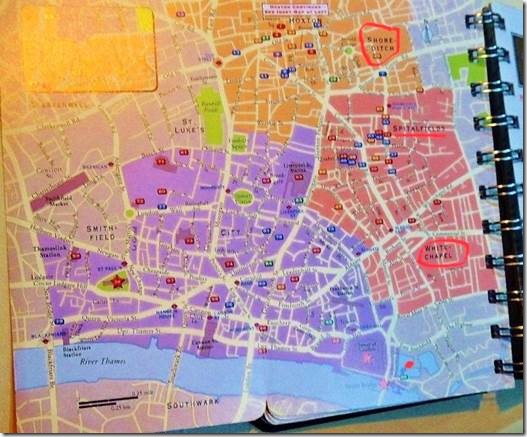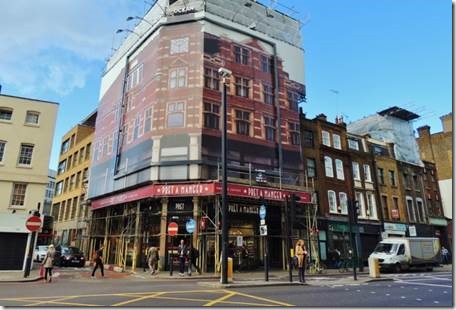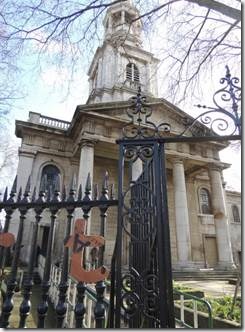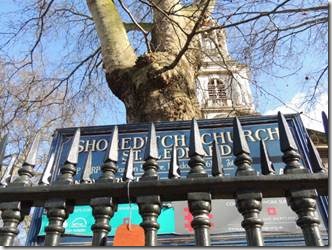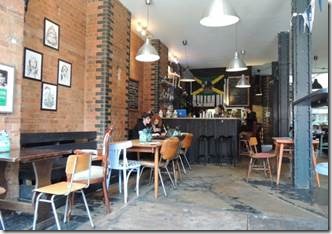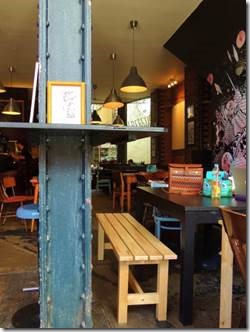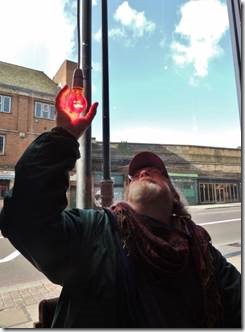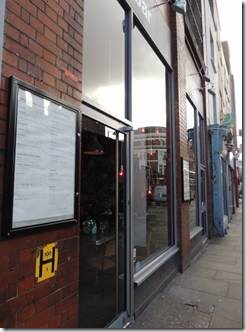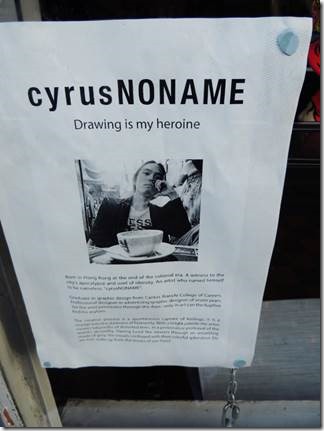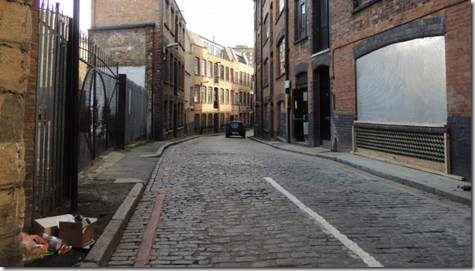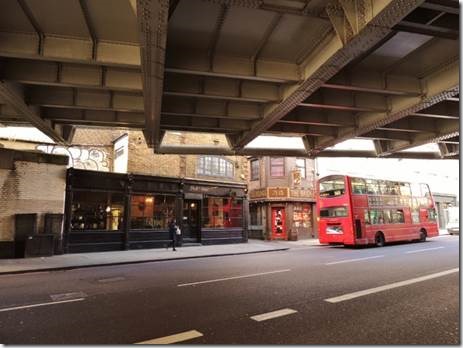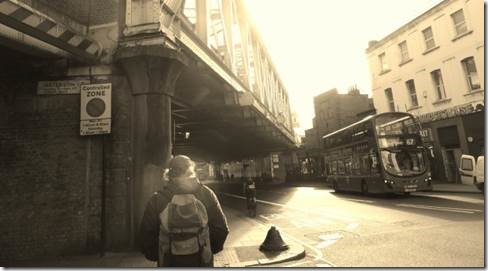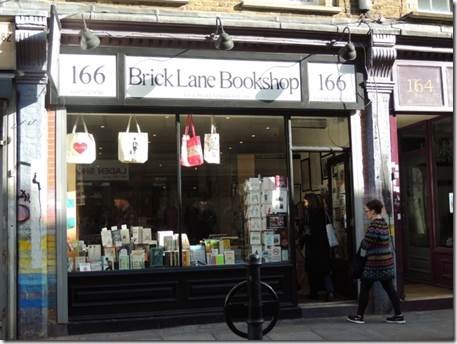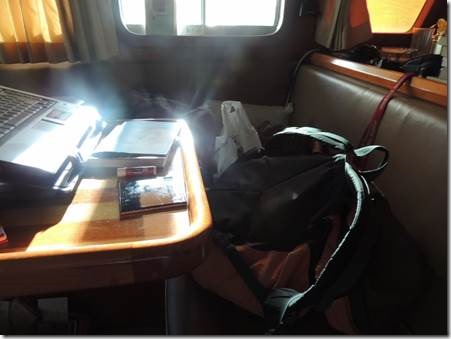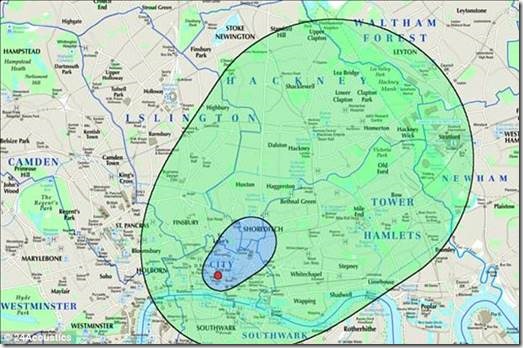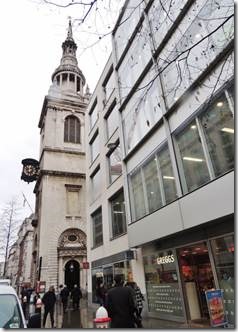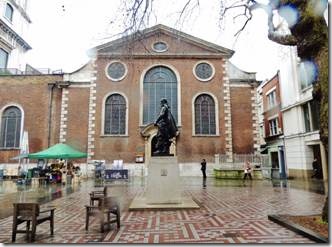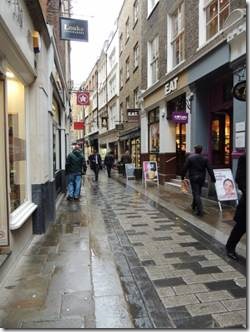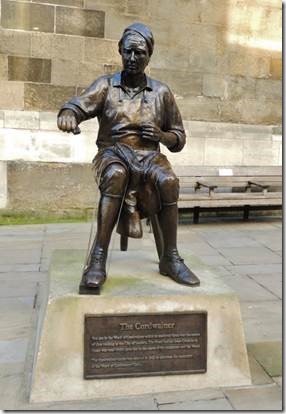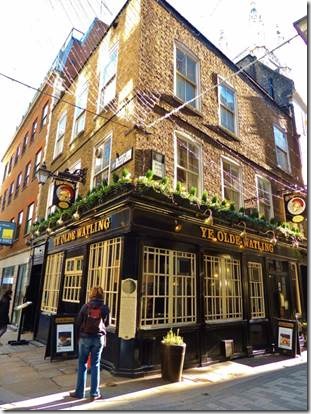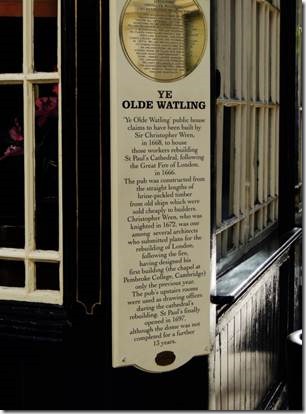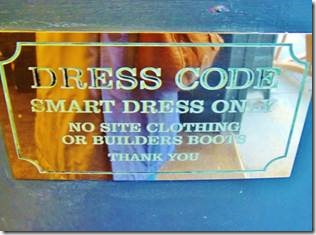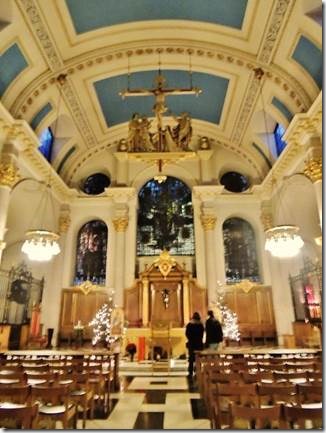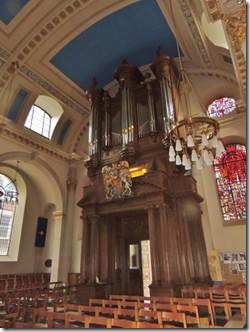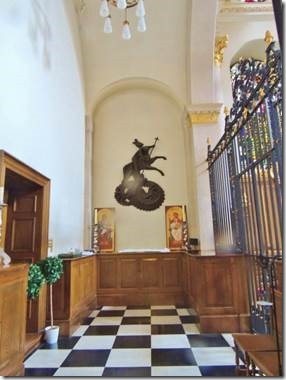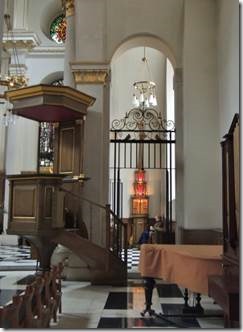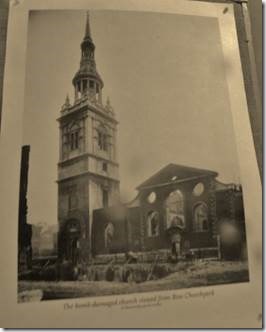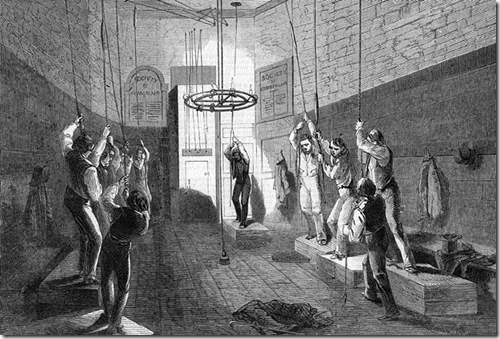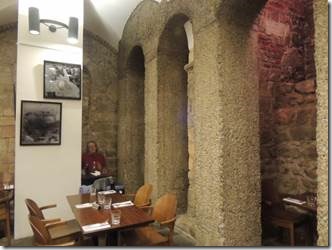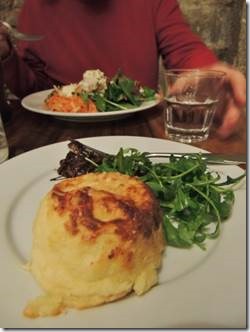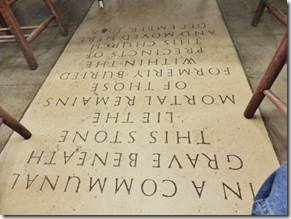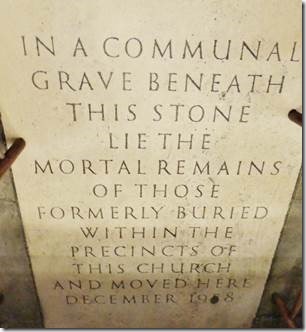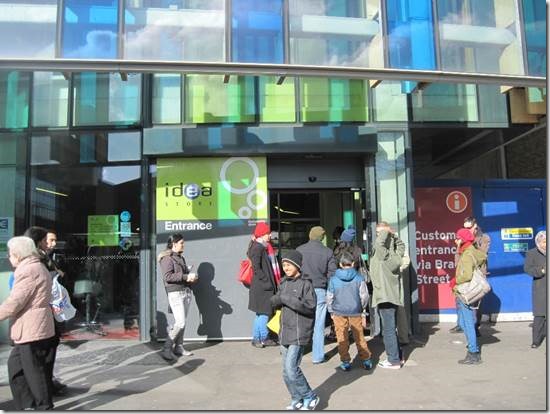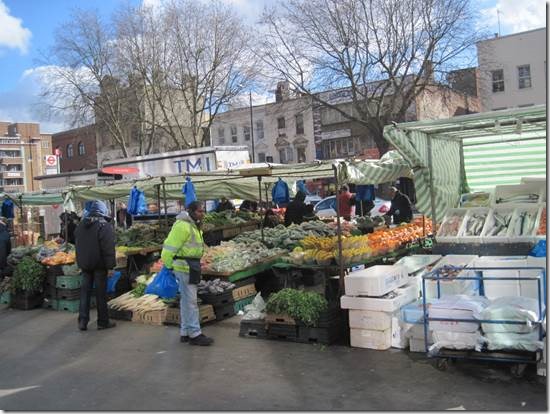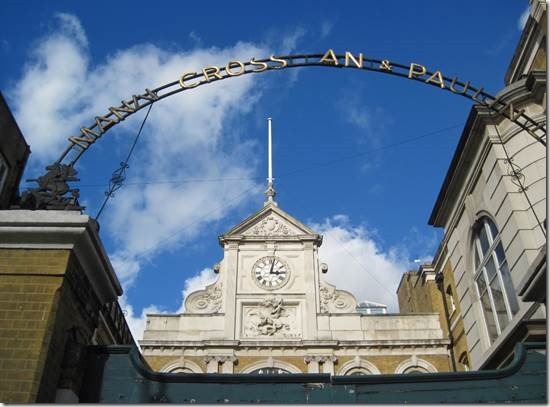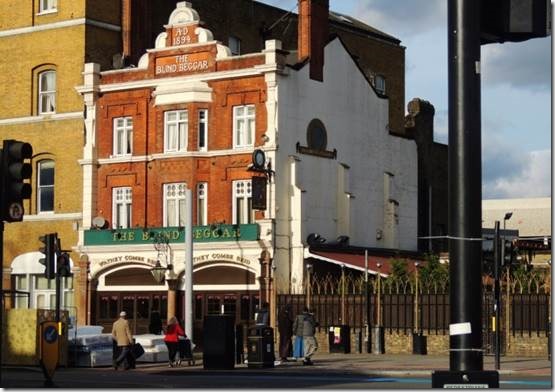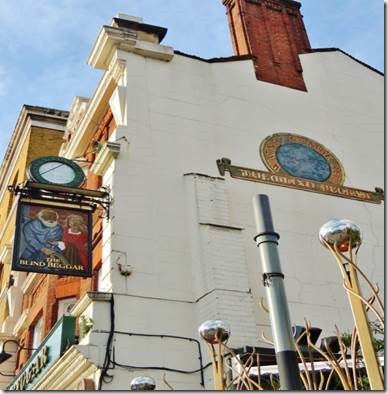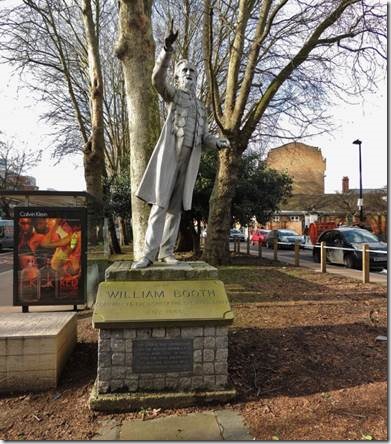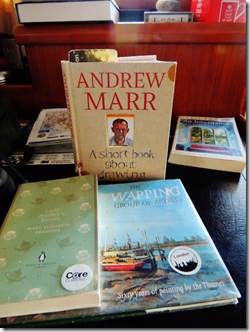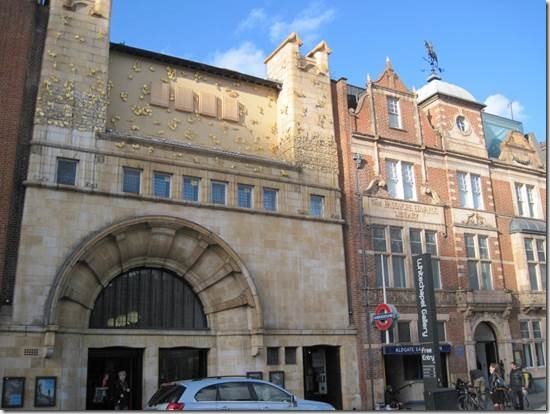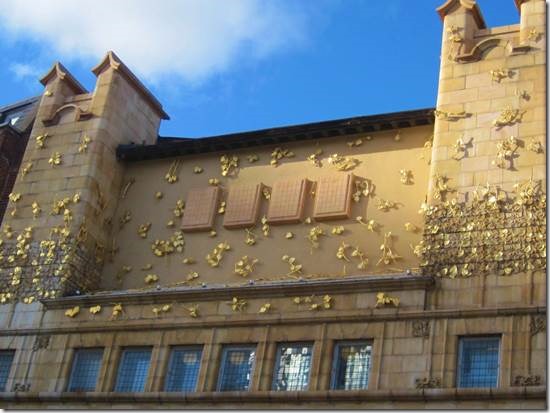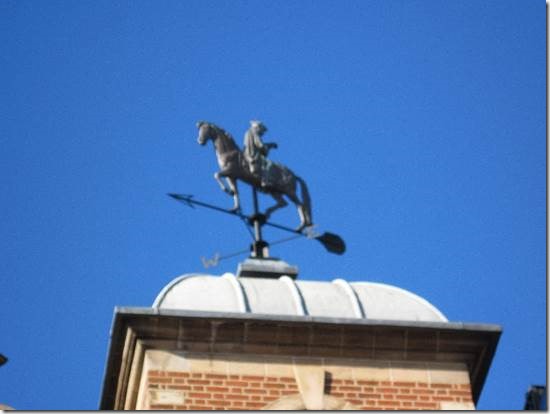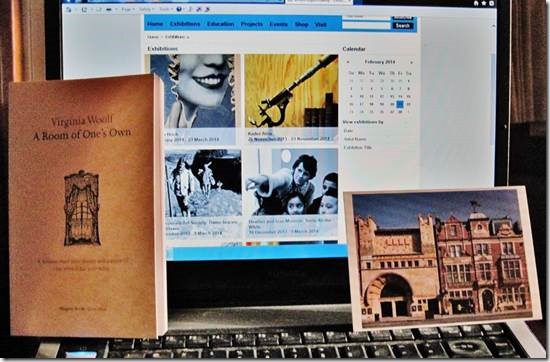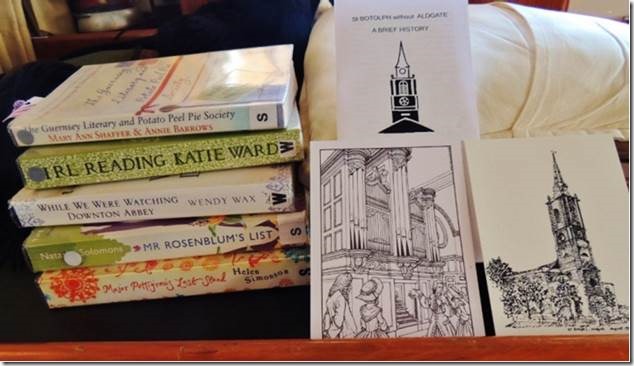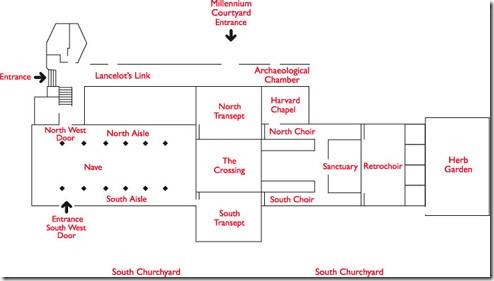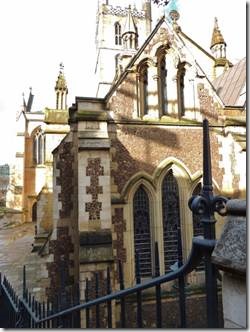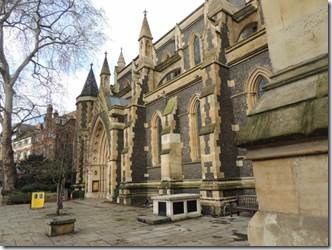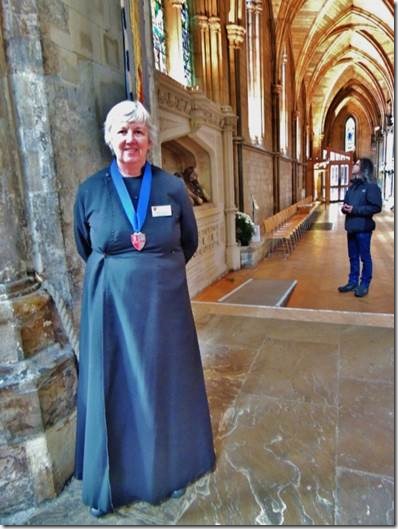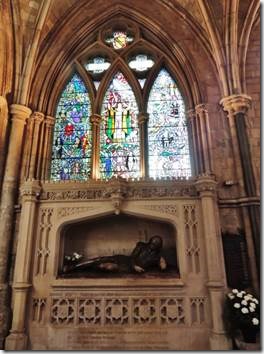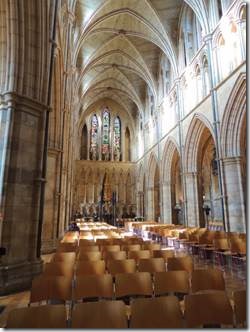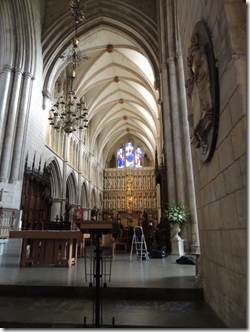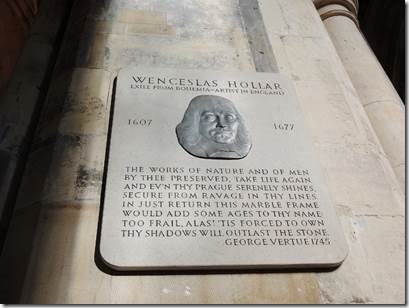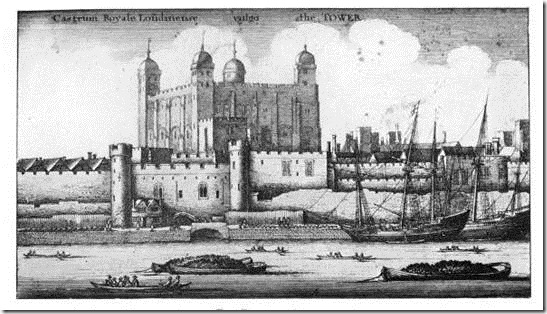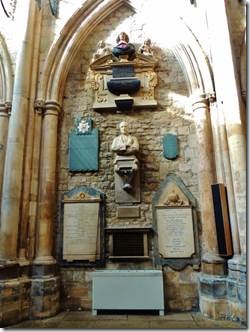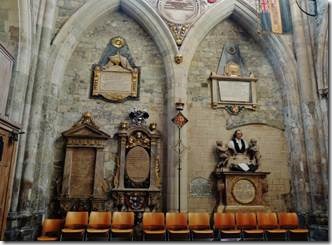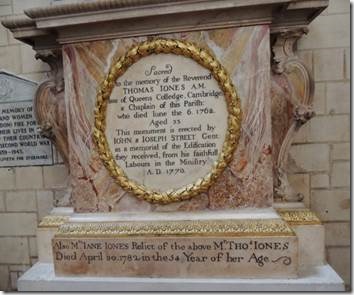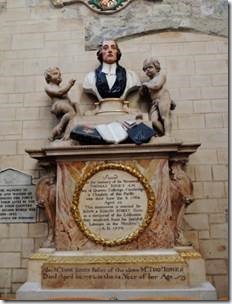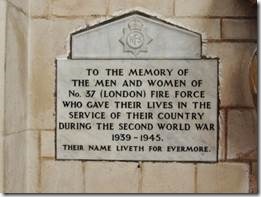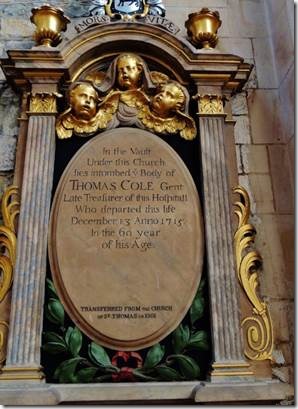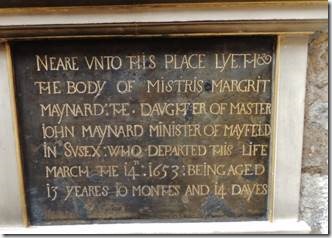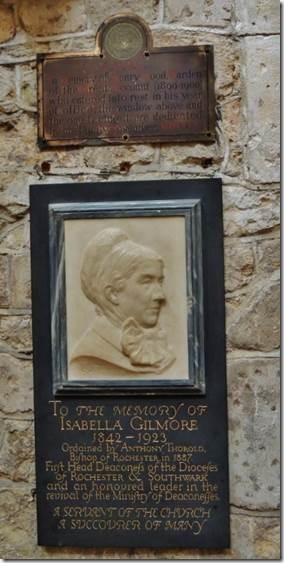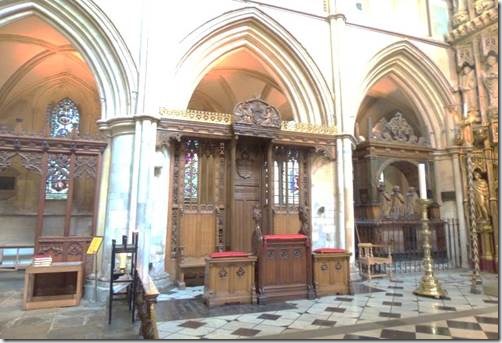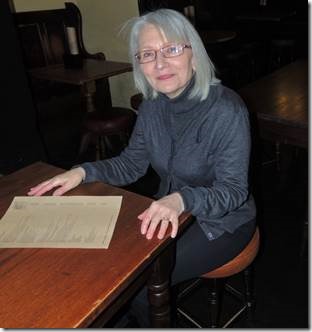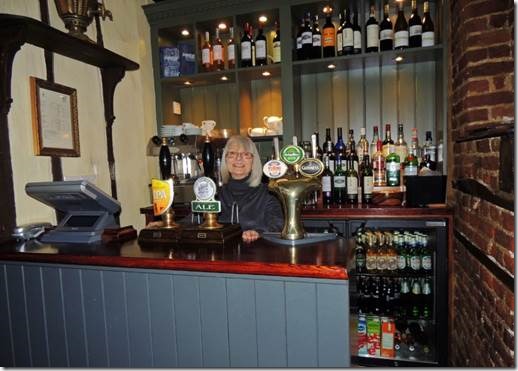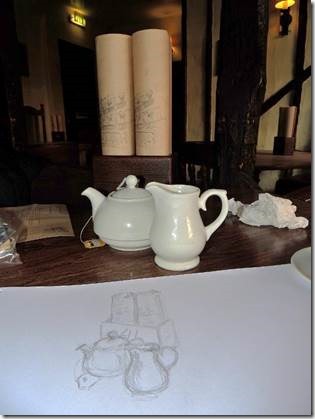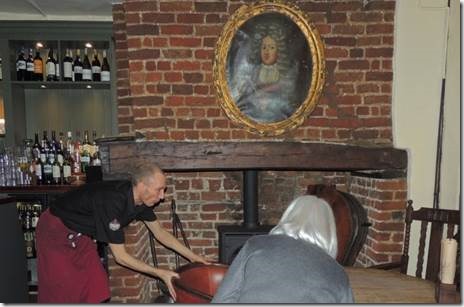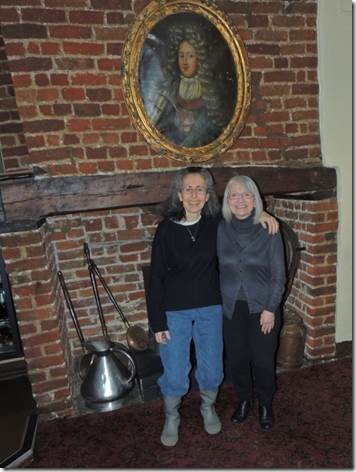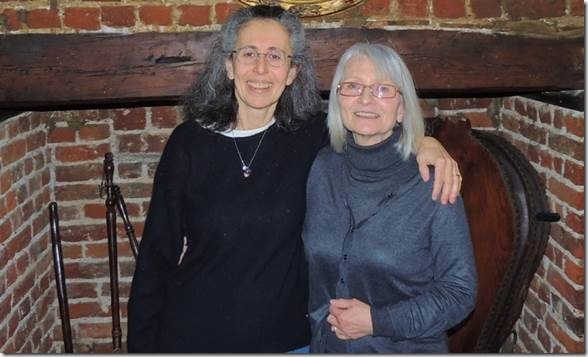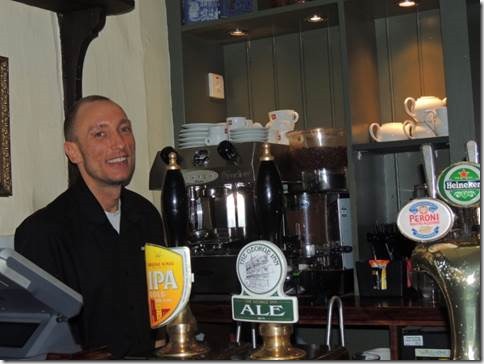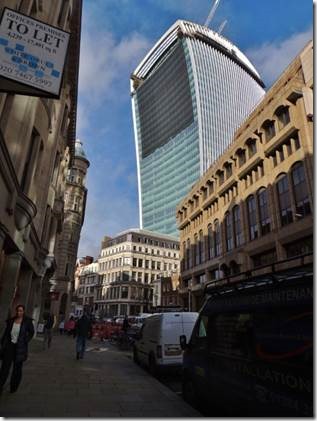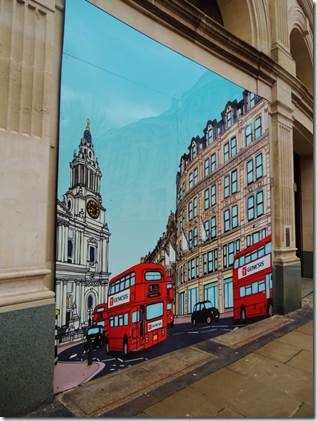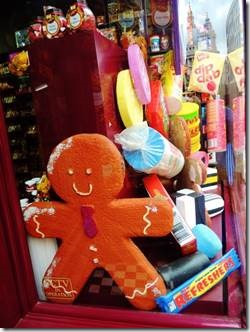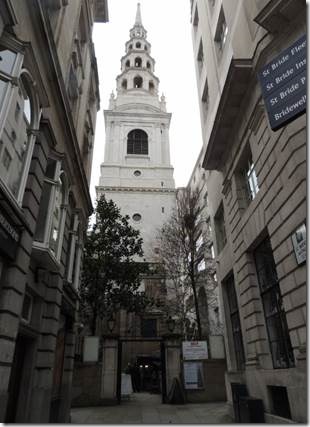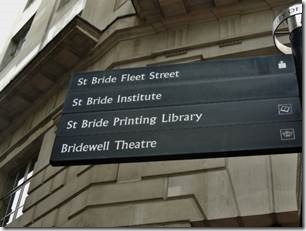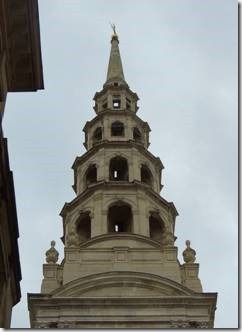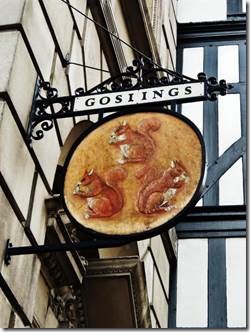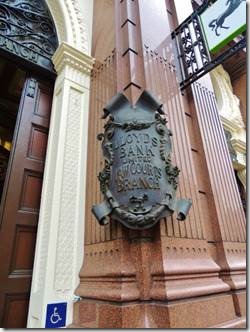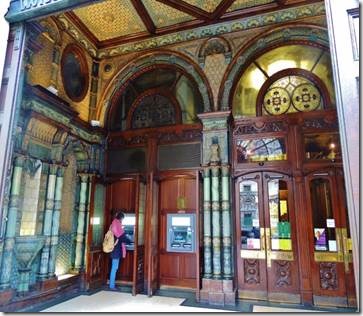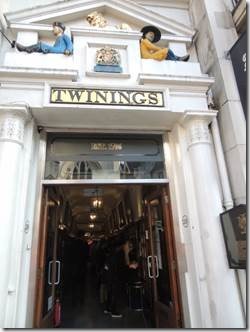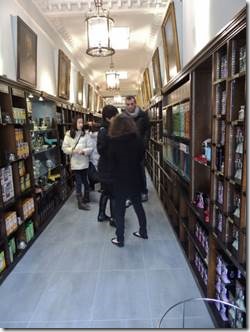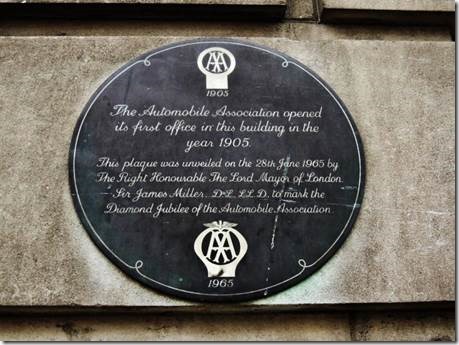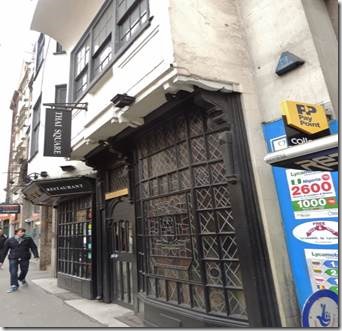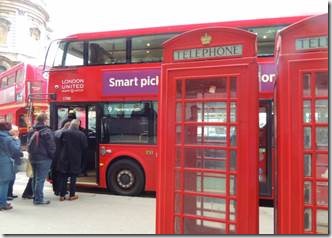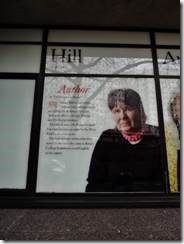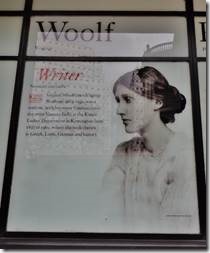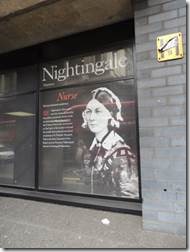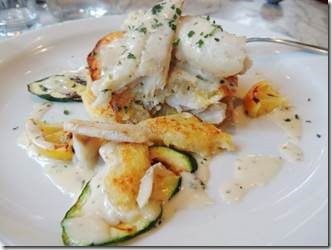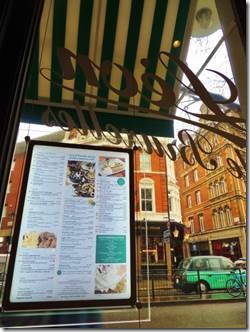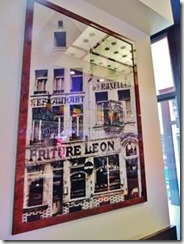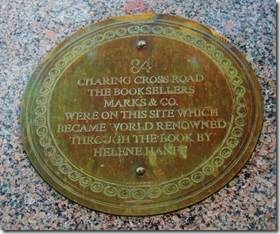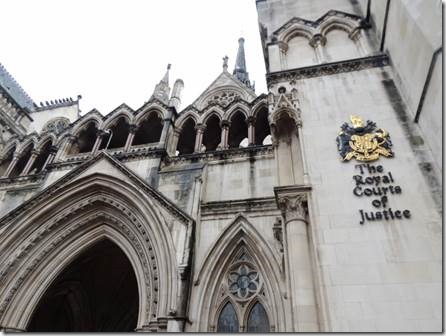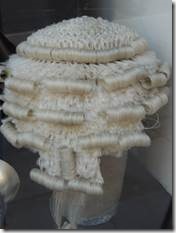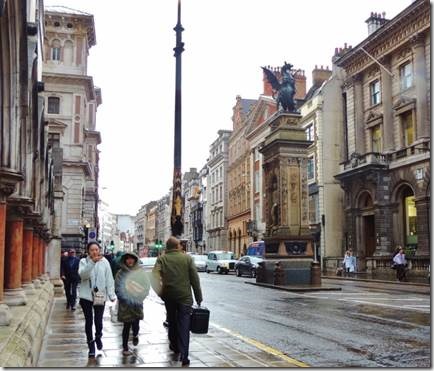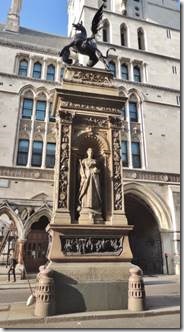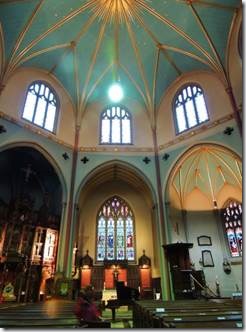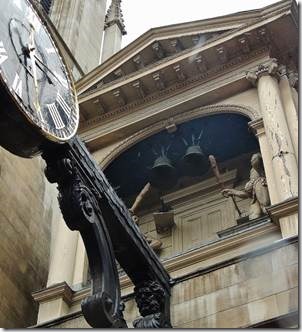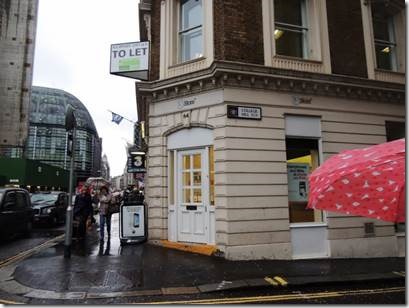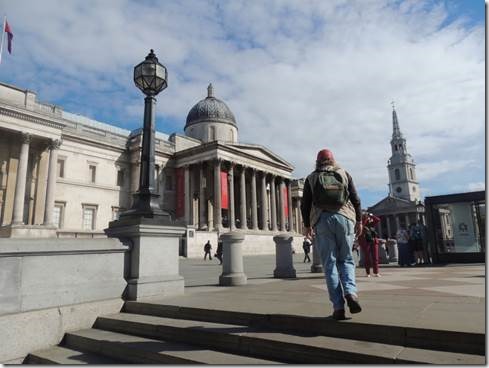Cheers,
One day left in February! Too much more to see!!! It takes a really long time to see a place unless you’ve done a ton of research ahead of time so know exactly what you want to see and see it the first time. We have toured serendipitously which then necessitates more visits after doing some research. Like Shoreditch for instance. I’ve been twice but definitely need to return for more visits. This story is about my second visit and Randal’s first. One of the pieces below mentions Rotten Row. My 6th grade teacher, Miss Doran made us look up Rotten Row as well as other English places and phrases. I had no interest at that time in my life. Horses yes, places around the world, no. Miss Doran was ancient then so I can’t possibly share this with her. Too bad. She was also the teacher who made the public library give me an adult card so I could check out the “real” version of A Christmas Carol.
Ru
Shoreditch
“The old London tradition is that Shoreditch derived its name from Jane Shore, the beautiful mistress of Edward IV., who, worn out with poverty and hunger, died miserably in a ditch in this unsavoury suburb. This legend, however, is entirely erroneous, as we have shown in a previous chapter. It does not seem to have been popular even so late as 1587. Dr. Percy hit upon quite as erroneous a derivation when he traced the name of the parish to shore (sewer), a common drain. Shoreditch, or, more correctly, Soerdich, really took its name from the old family of the Soerdiches, Lords of the Manor in the time of Edward III.” http://www.british-history.ac.uk/
I’ve been up and down Shoreditch High Street twice now and will go back again. It’s an area made for poking around in with funky shops, local eateries, and just that quiet “happening” vibe that places have where the locals still hang out.
http://www.bbc.co.uk/news/world-18373621 5 minute BBC video is a good introduction to Shoreditch.
|
Shoreditch circled: Spitalfields underlined: Whitechapel in the oblong. London’s east end. We are the red dot in the west basin of SKD Marina just near Tower Bridge Randal and I walked through much of the orange and back down through the pink of this map yesterday which was about 5 miles at least. We set off to the art supply stores on Shoreditch High Street. I needed some different drawing tools and it was just a nice day for a walk. I knew the area from my visit to the Geffrye Museum http://www.mydoramac.com/wordpress/?p=20598 Randal had never been. This time, because Randal was with me we braved the “less direct route” there and back. An adventure of discovery! Shoreditch In 1601 most Shoreditch people lived on or near Holywell Street – the modern Shoreditch High Street, which led north to the medieval church of St Leonard at the north west end. Here the High Street met the Old Street and to the north ran Kingsland Road, both having their origins in Roman times. There were grand houses, like the 15th century Copt Hall, on the east side of Kingsland Road, but the clay soil in the field between Kingsland Road and Hackney Road were being used to make bricks in 1602 and a mere twelve years later, Shoreditch saw its first brick terrace – Ratcliffe or Rotten Row – built nearby. Ralph Agas’ map of London of about 1570 gives a glimpse of Elizabethan Shoreditch. Cottages and two storey timber framed buildings line Holywell Street, with gardens and fields beyond, with the spire of St Leonard’s Church rising at the top of the street. To the east, Hog Lane (later Worship Street) runs past fields and market gardens to Finsbury. St Leonards Church had lost its medieval images of the saints and the Virgin Mary at the Reformation and the chantry chapel founded by the Elrington family in 1482 no longer echoed to the sounds of prayers for the founders salvation, but the morning sun still shone through the Elrington coat-of-arms in glass and the figure of St George in the church’s east window. The growing population had also seen new wooden galleries added to seat more parishioners, merchants, rich and poor – and acting folk. Shoreditch’s other great church had all but vanished by 1601. Holywell Priory, founded between 1133 and 1150, stood north of the present Holywell Lane. It was dissolved in October 1539, and the church survived just long enough to be sketched by Wyngaerd in the following year, but then the buildings were swiftly cleared away. But the precinct survived and in 1576 part of the former priory, including the Great Barn which was leased to ambitious head of the Earl of Leicester’s acting company, Richard Burbage, who was then living in a house on Holywell Street. On a site near the junction of the present Curtain Road and New Inn Yard, and conveniently outside the control of the City of London (who had just banned all play acting), Burbage built the Theatre. This wooden octagonal building was to see 22 years service and it was only in 1597, when the landlord refused to renew the lease, that Burbage’s son Cuthbert was forced to decamp. But he took the materials from the Theatre with him, and the wood was re-used to build the Globe on Bankside. The Theatre had a local rival. The Curtain – the name probably comes from the old priory walls – was built in 1578 on a site near the modern Hewett Street. It was smaller than the Theatre and may have been less successful, for in 1585 Richard Burbage took on the running of it in addition to the Theatre. A variety of companies played at the Theatre from 1590, among whom were the Lord Chamberlain’s Men, who included Richard Burbage, William Kemp and a player with some talent for writing as well as acting in plays – William Shakespeare. In the 1590s, Shakespeare lived in a house in nearby Bishopsgate and some of his plays were first performed in Shoreditch, including Romeo and Juliet. Richard Burbage was buried in St Leonard’s Church, the last home to many a thespian, including Henry VIII’s jester Will Somers (d.1569), and it was to become the actors’ church. http://www.nationalarchives.gov.uk/ definitely makes me want to return to look more closely! |
|
A building with a fake façade of a building…. Modern High Street. |
|
St Leonard of Shoreditch One of the churches in the poem “Oranges and Lemons” is St Leonard’s in Shoreditch. But more about that another time when I’ve finished visiting all of the churches mentioned in the rhyme. |
|
Lunch at Translate.. http://www.translateshoreditch.com/ “We call chips ‘chips’ and we say hello and goodbye, like humans, who like to offer nice service.” This from the blog on Translate’s website and it was totally true. The staff was welcoming to us senior folks; the food was really good and reasonably priced and they said “good-bye” when we left. I’d definitely go back and feel they’d probably remember us. Randal was fascinated by the red light bulbs. 11/18/2013 Translate has been under its current ownership now for 6 months and we felt it was time that we reflected on the mad journey we’ve been on. For those of you who don’t know, we operate in conjunction with our landlords, The Dictionary Hostel and function dually as both hostel bar and also public hangout. We are proud therefore of the amazing diversity of customers we meet, and therefore the friends we collect along the way. Very quickly one realises that "Tronno" is actually a Canadian’s way of saying Toronto and that "Straya" is an Aussie’s pronunciation of their mother land.” http://www.translateshoreditch.com/ |
|
He hooked me with “drawing in my heroine.” Though perhaps he meant heroin? I only thought of that now as I type this….hmmmm. His art was featured in Translate. http://artbabel-london.com/2013/04/23/photo-gallery-cyrus-nonames-art-works/ I like the stool. |
|
Renovated housing? Just off the High Street. |
|
Street scenes High Street Shoreditch |
|
Brick Lane http://www.bricklanebookshop.org/ Rather than return the way we came we went exploring and ended up walking down the vibrantly alive Brick Lane in Spitalfields/Whitechapel. I took this photo to help me find the bookshop when we return. We were really more than tired when we got this far on our way home so stopped for nothing other than traffic at the intersections. We also walked right past Brick Lane Beigel Shop. On Brick Lane they spell bagel, beigle. http://spitalfieldslife.com/2009/12/11/mr-sammys-beigel-shop/ When my nephew Andrew is here we’ll stop for lunch during our tour Brick Lane. |
|
Boat sweet home…with sunlight reflected from the buildings surrounding the west basin. |
Below follows and interesting discussion of the “Shoreditchification” of the poorer/seedier parts of London. We might call it gentrification or Yuppifying; but it’s not quite that. Socialismo explains it better than I ever could……
Socialismo • a month ago in his response to the Proud article.
“It’s dead simple:
Somewhere is cheap because it’s run down, has few jobs and a bit of crime.
Someone moves there because it’s cheap for its location.
Other people who want to live somewhere cheap and central do the same.
Area gets progressively more homogeneous, more expensive and more "fashionable".
People who live there and are priced out move on to somewhere else that’s cheap because it’s run down and the cycle repeats.
They are likely to be similar people because they have same (lack of) requirements:
1) They don’t care too much about a bit of anti-social behaviour or a drug problem,
2) They don’t care about local schools,
3) They care about bus routes and commute times around the city.
4) They care about cycle times.
5) They care about getting to work/to uni.
6) They don’t care about A&Es or GPs etc., so long as there’s a walk in centre somewhere nearby.
7) They don’t care about noise.
8) Above all, they care about rents.
Basically, they’re just trying to live in London as cheaply as they can.”
By Alex Proud 8:31AM GMT 13 Jan 2014
It’s not particularly clever or novel to hate Shoreditch.
In fact, I’m sure if you spoke to half the people on the streets of Shoreditch, they’d tell you that they hate Shoreditch and are only there as some sort of ironic exercise in nostalgia slumming.
But bear with me here. What I hate more than Shoreditch itself is the idea of Shoreditch and the way that so many of London’s neighbourhoods have been Shoreditched, are being Shoreditched or will be Shoreditched.
Of course, I do hate Shoreditch in the straightforward, obvious way too. I hate the stupid beards and skinny jeans. I hate the “dirty burgers” and the knowing appropriation of 1980s icons that were never any good to begin with. I hate the fact that every venue looks the same. And I wish every single hipsterpreneur who dreams of opening a pop-up restaurant (backed by Pop’s money) would just pop off.
But, as I say, Shoreditch is just a metonym for all those unlucky pieces of real estate that have had the hipster formula applied to them. The real problem is hipsters themselves. That global tribe of urban 20- and 30-somethings who, in their quest to be different, have wound up virtually identical. Go into any hipster venue and you’ll see. From the microbrewery ales and ironically-drunk mass-market lagers to upcycled furniture and jumble-sale ’70s suburban art, they’re all cool by numbers. The people dress the same, they eat the same and the conversations sound the same.
Shoreditch is a formula, a brand. It’s as much a part of mainstream consumer culture as iPhones and Sky TV and as global as Starbucks. So, let’s look at how an area gets Shoreditched.
You find a previously unnoticed urban neighbourhood, ideally one that’s a bit down on its luck. Pioneer hipsters move in and coolhunters ensure it starts trending on Twitter. A year later, the mainstream media notices and, for the next 12 months, the neighbourhood is byword for urban cool. Soon property prices soar pushing the original residents out, the bankers (always a trailing indicator) begin to move in and a Foxtons opens. Finally, the New York Times runs a piece in which it “discovers” the area and the cycle is complete. The last hipsters move on and find a new neighbourhood to play with.
This is where poor Shoreditch finds itself now. Its alternative crown was lost years ago to Dalston which, in turn, had it snatched by Peckham. If you head to Shoreditch on a Saturday evening these days it really is as “bridge and tunnel” as its detractors (and one-time champions) claim. A roiling, boiling mass of fight-ready designer-labelled out-of-towners smashed on sugary cocktails and bad cocaine, a cold-climate Ayia Napa. Notting Hill doesn’t know how lucky it is to have merely become a ghetto for bankers.
READ: In defence of the Shoreditchification effect, by a self-confessed hipster ..included below.
Of course, you could argue that being Shoreditched is nothing new, that it’s just a hip form of gentrification. In the early noughties, the American urbanist Richard Florida coined the phrase “the Creative Class” to describe the young, trendy and creative who regenerated previously run-down inner city areas. But what Florida missed was the relentless churn and accelerated neophilia of Shoreditch-style gentrification. The gap between Notting Hill and Shoreditch was a decade. The gap between Shoreditch and Dalston, a couple of years. Peckham was declared pretty much over before the first Korean taco van had a chance to park.
Now, the bearded seers of gentrification are turning their gaze to Crystal Palace and Streatham, Walthamstow and Tottenham. Doubtless these suburban nowheres will have their six months in the sun before they’re chewed up and forgotten, with only a few boarded-up “dirty food” restaurants and doubled house prices to remind residents that, sometime in the mid 2010s, they were written about (then sneered at) by Vice journalists. A few weeks back, I heard someone joking about Croydon being the next hipster destination and found myself a) thinking that it really could happen and b) wondering if pop-up KFCs could become “a thing”.
So, what is the solution? The solution is to treat places like proper neighbourhoods rather than Apple products with a two-year upgrade cycle. Here I hold up Camden as an example. OK, I know I have a vested interest, but Camden was cool in 1994 (and even 1984) and it’s still cool in 2014. It has, dare I say it, sustainable coolness. True, at no point in time will be it be as achingly “now” as a speakeasy in a repurposed public loo in Camberwell selling dirty cocktails in jam jars, but that’s the point. Sustainable cool knows which bandwagons to ignore.
So, what is the special sauce that makes sustainable coolness? The answer is in one neighbourhood that has managed to go from nothing to something that’s still cool 15 years later. This is the London Bridge area – and, like Camden, it has a unique attraction: Borough Market. And herein lies a lesson. The people that set up the retail market in the 90s did so when the area was a dump, the ancient wholesale market was in decline and Jamie Oliver was a sous chef. Although Borough Market in its current incarnation seems to have appeared, fully formed, sometime around 2003, it took ten years of dedicated hard work, most of it with no obvious reward, to get it to that point.
True, it’s is a lot harder than getting 10,000 Twitter followers for your pop-up cold-war-themed speakeasy. But people will still be coming to SE1 and NW1 in 2024. Whereas the hipsters will be down in Croydon (AKA Shoreditch 6.0), Instagramming pictures of McDonald’s cartons and wondering if that lairy-looking group of blokes are the most ironic dressers ever or a group of local chavs about to beat them up very unironically.
Follow Alex Proud on Twitter Gallerist and club owner Alex Proud is the founder of Proud Galleries and Proud Camden and appears on Channel 4’s Four Rooms
168 Comments
http://www.mydoramac.com/wordpress/?p=20551 includes our visit to Camden. From brief visits to both places, it seemed to me that Camden was filled with tourists and Shoreditch with locals. But it could have been the time and the day. We visited both areas during the week but will return to Shoreditch on a Saturday for the Broadway Market. In Camden we ate in a huge ‘chain place” and in Shoreditch we ate “local.” Makes a difference.
In defence of the ‘Shoreditchification’ of London
It’s easy to rail against hipsters for making neighbourhoods cool, but what else are lowly paid creative types supposed to do, asks Aleks Eror
By Aleks Eror 5:45PM GMT 14 Jan 2014
Yesterday, Camden cabaret magnate, Alex Proud, took to the these pages to slate the ‘Shoreditchification’ of London’s decaying urban neighbourhoods. The process he described is the same one seen in areas of East Berlin and New York: crack houses get turned into gluten-free vegan microbreweries and knife crime is replaced with sneering at people who shop in Urban Outfitters. In other words: the hipsters take over.
I am part of Mr. Proud’s problem. He directs his frustration at the beards and pop-up restaurants that are flooding into London via the Shoreditch sluice gates. Well, that’s me. I’m proud to be part of the millennial creative class that’s apparently colonising the city. ‘Shoreditchification’ is becoming a dirty word, so allow me to defend its merits.
It is easy to satirise hipsters by painting us as a militia of irony-drunk re-decorators, contracted by Foxtons to seduce hedge fund managers and their property portfolios. A scourge of flannel-clad apocalyptic horsemen, riding upon the backs of fixed-gear bikes, we leave a trail of loft conversions and organic street food in our wake. While this is generally the case, it incorrectly suggests we make areas desirable for fun before cycling off to victimise another postcode for jokes. Not true. Young creatives flock to crime-ridden neighbourhoods because we can’t afford to live elsewhere. It’s not a nefarious or sinister decision, just simple financial necessity.
The problem comes when our brand of ‘cool’ gets colonised. In Shoreditch, Dalston, and Hackney, an influx of bankers has raised our rent beyond our means, while weekend commuters from Essex, dressed like a Supreme collaboration with TOWIE, kill our vibes by re-enacting Brits Abroad in Hoxton Square.
There are two victims in this process. The first are the indigenous communities to the area, who get squeezed out by social gentrification. The second? Us lowly-paid creative types, who can no longer afford to live in the area we’ve made our home.
Sure, I get it, people hate hipsters. But what’s the alternative? I’m curious to hear how many of the naysayers spent weekends in Hackney 12 years ago, when it was reportedly more dangerous than Soweto. And if you’re that bothered by designer fried chicken shops, Edmonton’s still as authentic as ever. Just don’t forget your stab vest.
In his article, Mr. Proud held up Camden and Borough Market as examples of enduring cool, breaking my computer’s sneer button as a result.
As a Southwark native, Borough Market is a place I associate with Bridget Jones, hordes of Spanish tourists, and the Ginger Pig (purveyors of pork so expensive I’d need multiple payday loans to become a customer). Camden on the other hand was last culturally relevant in the mid-2000s, when people still read the NME and promoters remembered Razorlight.
So without the east London axis of irony, what do we have left? The West End is a buffer zone protecting Londoners from tasteless tourists, while clubs in Chelsea are about as accessible and cool as David Cameron’s Cabinet.
I would love for people to heed Alex Proud’s advice and stay away from anywhere me or my friends would consider going out, but unfortunately, this is the curse of cool, our ethically sourced crucifix. And more than anything, cool is about exclusivity: everybody wants it, but it’s a scant resource.
We hipsters have turned ourselves into self-gentrifying urban Bedouins, eternally popping-off then popping-up where ever is cheapest, and we take a lot of flak for it. But just thinking of the alternatives is enough to make my beard go grey.
Follow Aleks on Twitter
71 Comments
Caspar Boehme • a month ago
We get kicked out this weekend of our warehouse in Shoreditch after almost a decade investing love and sweat into the local community – to clear the stage for "luxury" apartments. Its not bearded idiots how are kicking us out its the systematics of real estate. They just accomplished the "Avantgarde Tower" in front of our windows, a "take everything give nothing development" the only thing it gives back to the surrounding is a big shadow – thanks. And as long as there no serious political shift in terms of building laws, your creative neighbour will be replaced by
a guy working for the devil in no time. I think Camden sucks as well as Shoreditch because both neighbourhoods got turned into supermarket-museums of their once vital sub-culture. In Shoreditch for example agencies have to strategically place "street-art: to keep up the "Shoreditch-vibe"…..
A good example of where things are going a different track is Whitechapel, here Bangladeshi landlords refuse to sell to developers to protect their community.
Commrny # 76
From our lunch spot’s blog…
A word on Shoreditch http://www.translateshoreditch.com/the-captains-blog.html
01/14/2014
This blog post is a response to an article written in the Telegraph on 13th January by Alexander Proud, the owner of Proud Camden and Proud Cabaret in the city. His point was that London needs to avoid ‘Shoreditchification’ aka not allowing run-down areas to be systematically taken over by those who go by the title of ‘Hipsters’.
I work in Shoreditch.
I have to admit there are a lot of plonkers walking around looking like plonkers.
That’s London for you.
But I think Mr Proud is fundamentally flawed in his anti-Shoreditch diatribe for 3 main reasons:
1. London is based on regeneration. Crowds wash in and they wash out again. The streets are lined with people of different colours, backgrounds and vibes. You turn a corner and you could be in another city. That’s the beauty of our
capital and that’s why people come here – to get lost in it all.
What benefit would the city derive, if its run-down areas (and their residents) were condemned to a life of deprivation and social neglect (see Tottenham
2011)?
Go let Peckham have some nice coffee shops and bars in old stations or whatever they’re doing. Let Walthamstow village emerge as the best thing since East 17 feat. Gabrielle. (and if you ever….) Maybe they might open an art gallery.
2. Has Mr Proud been out in Camden recently? I work in the East-End but live in the North-West of the city. I drive/walk/stumble through Camden on a daily basis and I have a certain warm feeling for the place. It is reassuring, its edges are frayed and it is generally unthreatening. Basically it’s what you want in an old pal. But the epitome of cool and vibrancy it is not. It is currently tired, samey and lacks quality. It needs a serious shake up and some good old fashioned PR. It is tourist trampled and requires patience.
Needless to say it is not helped by having a high density of average late-night
venues. Any new premises that have popped up over the years (take ‘Joe’s’)
have decent enough music but you’re looking at spending a night in a hot-box
full of punters desperate to attend a night spot where the bartender doesn’t
look like a Motorhead roady. The pubs are throw-back and need to regain that ‘thing’.
Live music is in the blood of Camden and there are some iconic places – but now that the Amy Winehouse ship has tragically sailed, it’s attachment to cool is sinking fast. Whilst there is an acknowledgement that new licenses are hard to come by in Camden, it is dragged down by the same operators owning 3/4/5 venues in a small area. Where’s the variety? The newer bars that have opened in Camden are not great, nor improving, and are behind the level that is set in other parts of the city. I want Camden to match my love for it with the overall quality on offer. It is awash with chain restaurants and even the food stalls in the Lock conform to what Jonny Average’s expectation is of that given cuisine. Sweet n Sour chicken that’s been sat there all day anyone?
3. Shoreditch has its fair share of beards and bad shirts. Some beards are better trimmed than others. But not every bar in Shoreditch feels like it needs to serve its drinks out of a pickle jar/tennis ball and have a secret door that leads to an even more secret room. Some bars have a secret door that leads only to the stock room. And they like to serve their drinks in big, clean glasses. They also think that a good bar should be founded on the basic principles of tasty drinks, amazing music and even a chat with the person serving you. Now where could you find a place like that….?
Not everyone here is a hipster with anchors adorning our inner arm, clutching Vice Magazine as we cycle down Redchurch St on our single-speed penny farthing. Shoreditch nightlife accepts itself as the eastern side of central London, like Camden skirts its north face. Shoreditch is
only going to become more mainstream, for normal people, who like to drink in Notting Hill and Soho and the City and Brixton and Kensal Rise and wherever the hell they want to drink, eat and enjoy spending their money. Let’s embrace the change. Worth noting also that Hoxton, a neighbourhood that we are super close to, is anything but a hipster sanctuary – it is essentially a large council estate with its own sense of community, problems, parties and pound-shops. Thank god for that too.
I urge Mr Proud to come on down for the night. (His new-gin-so-cool-it’s-unheard-of Negroni served in a reclaimed plant pot made by rehabilitated ex-cons is on me). We call chips ‘chips’ and we say hello and goodbye, like humans, who like to offer nice service. I promise him I will shave in advance of his attendance and also that he might leave with a different opinion of Shoreditch than the one he came in with…
http://www.workhouses.org.uk/Shoreditch/ tells some of the history of Shoreditch workhouses as it was until recently a poorer section of London.

